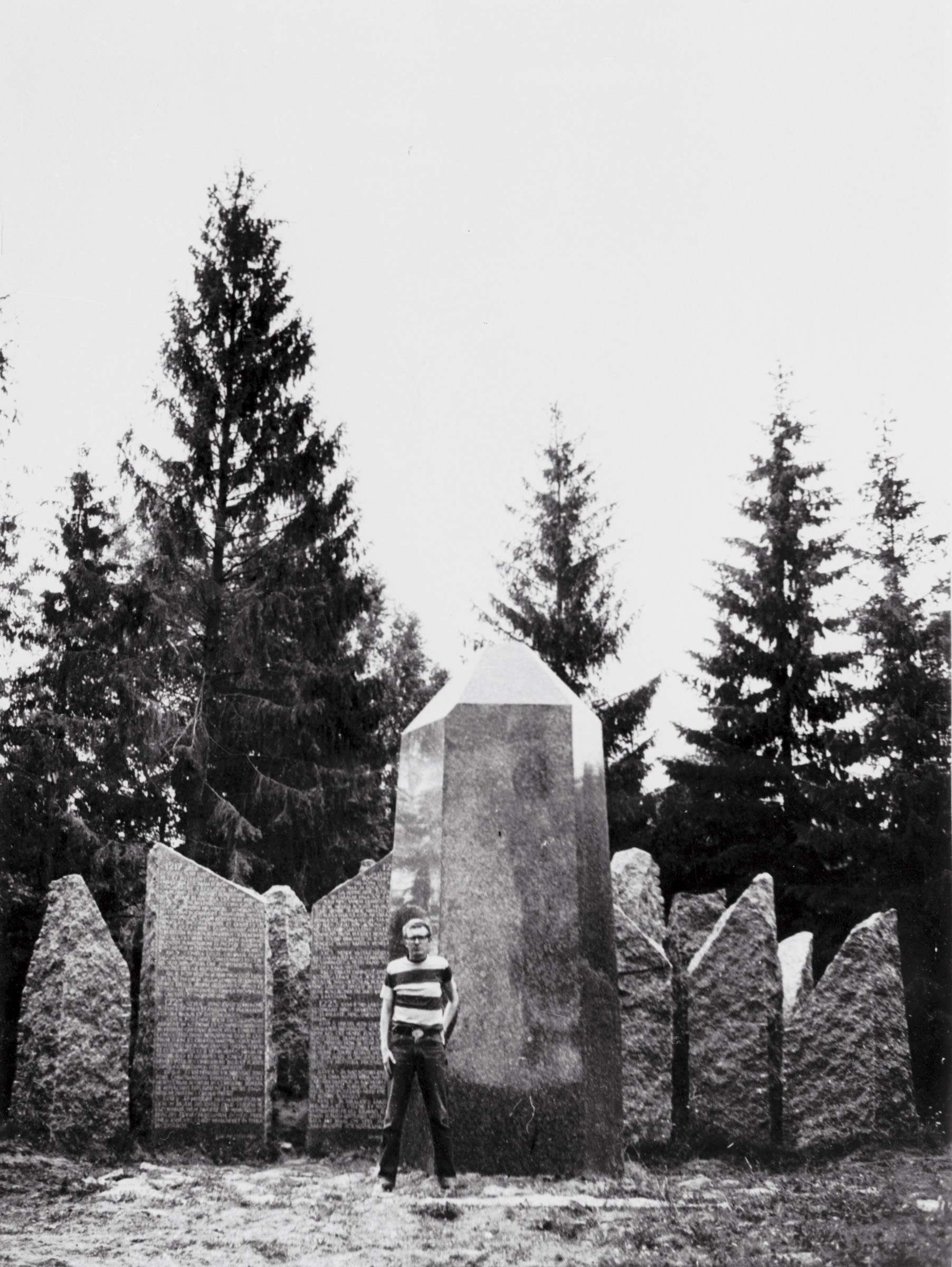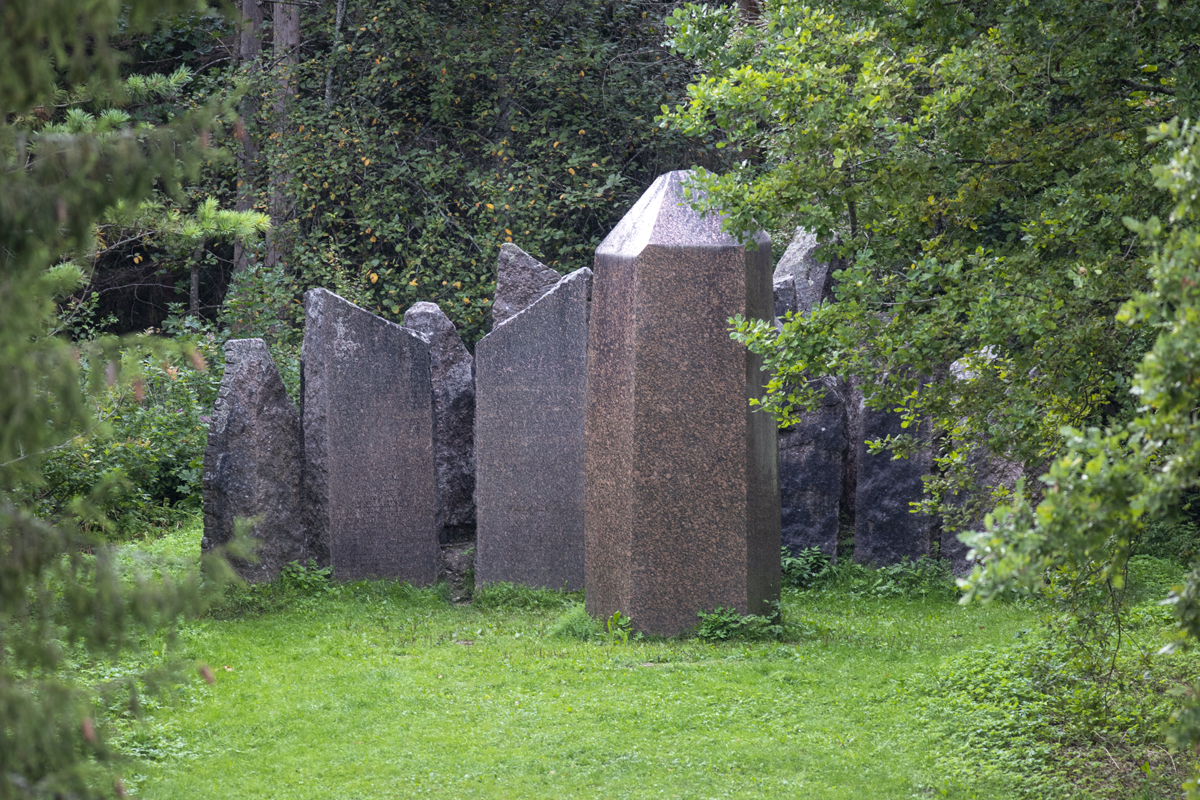Monument Sakalamaa kaitsjatele 1217–1223 (“To the Protectors of Sakala 1217–1223”)
Years of completion: 1967–1969
Address: Viljandi County, Lõhavere village
Authors Ülo Stöör, Renaldo Veeber
Granite
Not listed as a cultural monument
Ülo Stöör (born 1939) is an architect born in Pärnu, who spent his childhood in Nõmme, and lived and worked in Viljandi starting from 1966. He has dedicated his recent years to writing memoirs. The four volumes of memoirs written by him offer an original insight to the recent and distant history of Estonia through the prism of spatial culture. In the second volume, Stöör gives an overview of the birth of the Lõhavere monument, introducing the affairs of the time, and explaining the national ideological substance of the monument through essay, which blurs the line between belles-lettres and historical record, much like the style of his former schoolmate and Estonian President Lennart Meri.
The story can be summarised as follows: in the 1960s, Stöör displayed a lively interest in Ancient Estonian history. Upon reading The Livonian Chronicle of Henry and socialising with the esteemed humanitarians that were active during the Estonian Republic, Stöör believed that Estonians had to have their own written language and nationhood by the end of the period of Ancient Estonia, and that Christianity was nothing foreign here. The Battle of St. Matthew’s Day may have ended tragically with the murder of Lembitu, the elder of Sakala County, and the pillaging of his village – most likely the Lõhavere hill-fort – but not with surrendering. Stöör believes that a cease-fire was agreed upon, honouring both sides, after which ties with Western culture grew stronger: the War of Independence created a balanced foundation onto which a culture and nation was built later. The young and eager architect was certain that a monument had to be erected for the commemoration of the historical event, and that it was his task to create it.
Upon discovering that sculptor Renaldo Veeber was in the same mindscape, the two decided to join forces. On one occasion, when debating over the matter in a café in Viljandi, Stöör was struck by inspiration – the monument was to speak of a primal power, best exemplified by crystal quartz, which grows for thousands of years and symbolises eternity. And so he depicted the idea of the War of Independence as a crystal, and the dramatic events surrounding it as smaller points. In a rush, he sketched out the draft on a napkin, which became the basis of the project henceforth. Now funders were needed – 22 economic entities from the Viljandi district agreed to support the idea. After that, a suitable stone was sought. A six-metre long glacial erratic was dug up in Taevere village for the “crystal” shape in the composition’s centre. Three track tractors were used to bring the stone to the monument site, after which stonemasons spent a year shaping it. Stöör had a passage about the peace agreement from The Livonian Chronicles cut into the stones in the background of the main column – in Estonian on one, and in Latin on another. Whoever happens to visit Lõhavere can take a photo of the text and translate it later at home. As suggested by archaeologist Harri Moora, the monument was placed on the hillside of Linnamägi, instead of on top of it – a monument on top of a monument is not appropriate.
The artwork was opened with a celebration in the summer of 1969. Ideological workers could see an anti-imperialist sentiment in it, but to the authors it was a deeply patriotic piece, critical of any foreign power. Such controversies were characteristic of the Soviet Era. In the grand scheme of things, the monument expressed the intellectual state of mind of the era, during which power of mind had to be derived from oneself after the events in Prague. The form of the monument exemplifies the popularity of abstract visuals during the period. The piece is in good condition, and although the hunks of stone secured to a foundation can survive for an eternity, the memorial deserves to be acknowledged as an official cultural monument as well.
Gregor Taul













